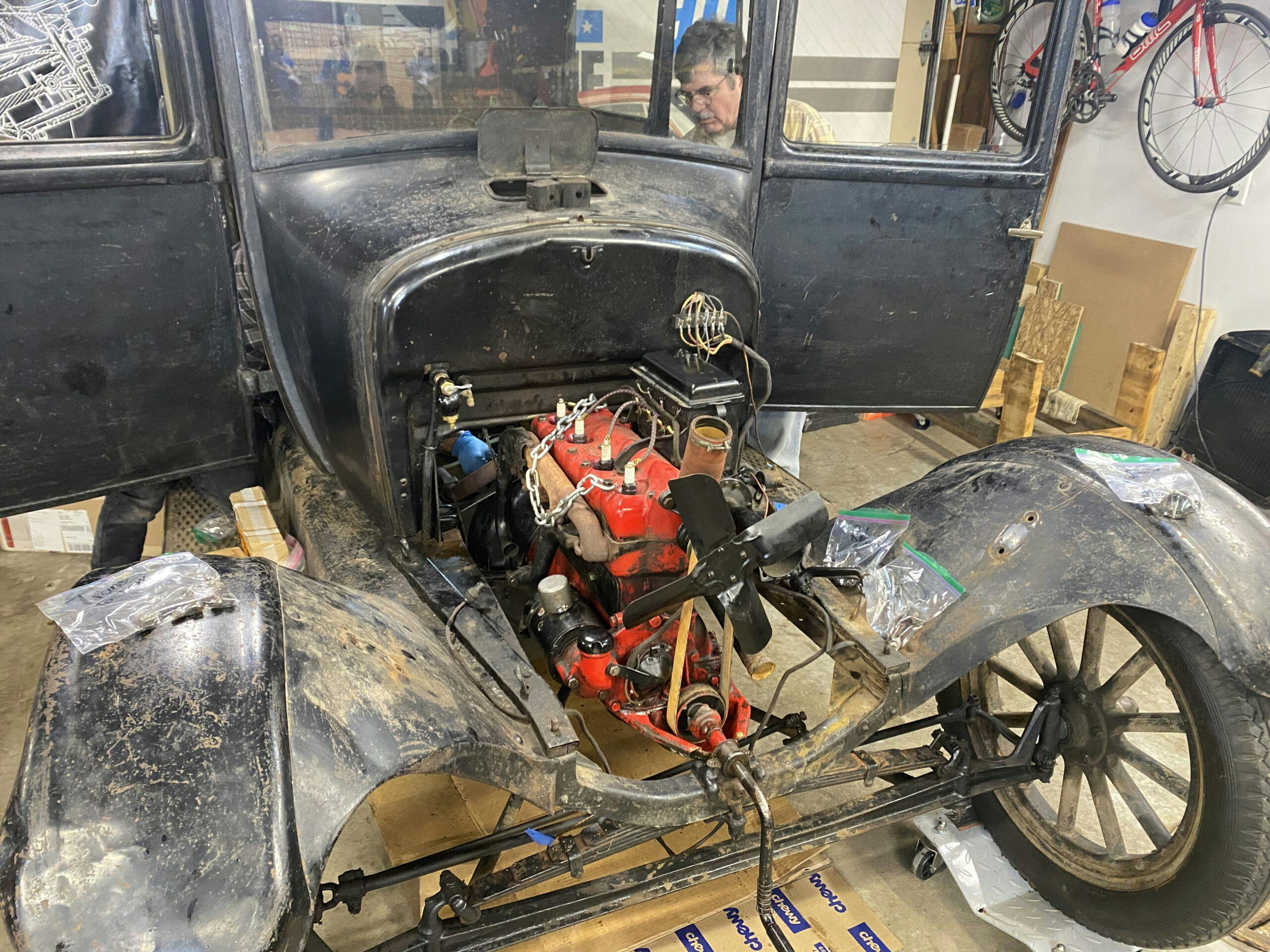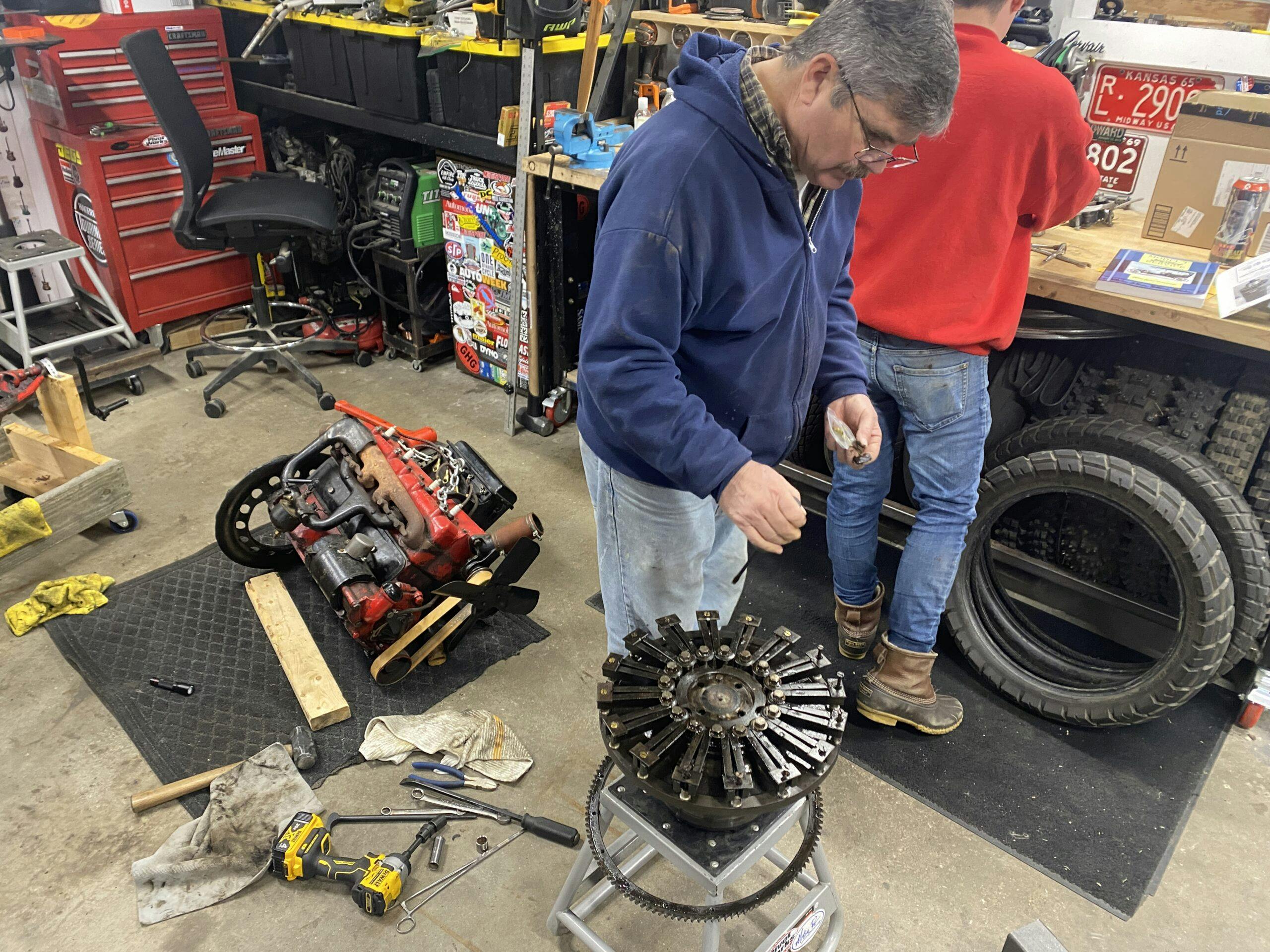Enjoy your car, even when enjoying it requires changing it
Winter storage is a real pain to find up here in Northern Michigan, so I work diligently to keep the owner of the pole barn in which I store my cars happy. When Bruce wanted some work done on his Model T Ford, I was eager to help. Interestingly, he felt the need to justify the changes he had planned for the car. That got me thinking.
Bruce is a really good human. He spent his life as a medical professional, with a side interest in cars. Each winter, his ’40s Chevy truck and first-generation, straight-six Ford Mustang are joined in the barn by my Corvair and Model A. Bruce is no stranger to vintage cars or to broken bones. Like most of us, he avoids the second whenever possible, but the crank-start on his Model T posed a threat.
When it comes to operating an automobile, a fracture hasn’t always been easy to avoid. Starting a ‘T requires intimate knowledge of how an engine works: You must calibrate the throttle, timing, and transmission correctly or the engine can backfire and spin the crank-start handle out of your hand and into your arm. If the engine does start, but you haven’t set the parking brake/transmission correctly, the car can run you over. Neither is an ideal situation.
Even after Charles Kettering patented and began to sell the electric self-starter for automotive engine applications in 1912, the crank-start hung around. It was cheaper. Henry Ford was still trying to push Model T prices down in the 19-teens, and therefore the cars came standard with hand-crank start. Well-to-do buyers could opt for an electric starter beginning in the 1919 model year, but even then it was a $20 add-on to a $500–$750 car that targeted the least affluent buyers. The car was a functional object, not a plaything, so many customers saved the dollars and got to cranking.
A century later, most Model Ts have become the opposite of what ol’ Henry designed them to be: Capable, relatively comfortable daily transportation. Speed limits have increased to the point that the 35-mph top speed of a Model T stands out in traffic—and not in a good way. Now that roads have been smoothly paved, the chassis, which is as stiff as cooked spaghetti, produces an unnerving ride. Heck, in 1927, when the last Model T rolled off that world-changing assembly line, it was already woefully outdated.
Yet Bruce is not ready to resign his Model T to life as a 1:1 scale-model car. This winter, while discussing when I would drop off my Corvair and Model A, Bruce and I got to discussing how to get his ‘T running again. Not just running, but running without the need to hand-crank it.

His car had all the parts for an electric starter. Sadly, Bruce said that not all of them were ready to be pressed into use: The starter ring gear nestled behind the engine yet in front of the two-speed planetary transmission had fewer teeth than a career bare-knuckle boxer.
After doing a little research, I proposed a barter exchange: In lieu of payment for a season of storage, I would pull the T’s engine and transmission, separate the two, replace the ring gear, then reassemble it all. Oh, and deal with any of the other hacked-up or cobbled-together things that would inevitably pop up. Sounded like a pleasurable Saturday to me, and Bruce literally had to do nothing.
Handshake, nod, deal.
I’ve heard jokes about fixing a Model T with bailing wire and pliers. Luckily, this job was almost that easy. After three evenings of work, the engine was back in the chassis. The sad old battery under the driver’s side floorboard had just enough juice to prove the new ring gear was correct, promising that this tired car was going to get a new lease on life come spring. All without Bruce having to fear broken bones.
Could Bruce instead get over his fear and learn all the tricks to hand-start his vintage Ford? Yes. There are countless Model T Fords driving around the world that do not have electric start and their owners are likely quite happy with that situation. Bruce wasn’t. Understanding the limits of the ‘T is one thing; having the tolerance to deal with its inconveniences when you don’t have to is another. Bruce wasn’t reengineering a solution to make this car something it was not. The factory gave the model electric start; he just wanted to get the system working on his car.

There is no right way to own or enjoy a car. Bruce elected to restore one system for the sake of his enjoyment. This is no different than restomods from the 1960s or custom trucks from the 1970s, except that Bruce isn’t declaring himself smarter than the engineers who spend years designing and building the car. He is keeping a functional object functioning, with an upgrade available when the vehicle was originally sold.
An automobile can be highly individual and the most important decision-maker involved in building, maintaining, and driving any given car is its owner. Neither Bruce nor you should never feel any regret for making your car an extension of yourself.
Of course, there is also a bit of comedy to that principle, since the automobile was born as an appliance. I don’t think I’ll ever have the desire to custom-paint my coffee maker, or re-gear my wife’s KitchenAid stand mixer for more torque, but who am I to judge if you do? Just don’t get caught in that mixer … I hear it can break your wrist.
Check out the Hagerty Media homepage so you don’t miss a single story, or better yet, bookmark it.







I’m not a big fan of dropping an LS and modern frame and suspension into every older car… on the other hand, if you are going to actually drive them and not just stare at your garage trophy, there is always some level of modification that needs to be considered. For my 65, it was dual circuit brakes with discs up front, and a 4 speed automatic in place of the original 2 speed. I actually plan to drive this car, and at hiway speed
Bruce might as well go full Ed Roth with that thing now…
Do whatever makes you happy with your vehicle. Using it and enjoying it is the point.
Exactly!
Hahahaha! I like that!
Like I always say, “Well, I took the radiator cap off…I might as well rebuild the engine….”
I agree with getting it out, driving, meeting so many nice people who want to share their own relatable stories.
If the car is to the point where something dissuades you from using and enjoying it, then either sell the car or remedy that issue. For me, it’s air conditioning. I live in Texas, and I like to use my vehicles and I want to be comfortable. I can understand if you have some rare vehicle where making changes negatively impacts the value, but for the vast majority of us, making the car more usable (and thus more sharable with the public and our families and friends) is the whole point.
I totally agree with this change. i hand cranked a few cars, when I was a lot younger, and it was no fun.
I added dual circuit brakes to both of my Hudsns (37 & 50), and added disc brakes to my 60 Chrysler, t make both cars better to drive in moden traffic. I added electric wipers to the 37 Hudson after I got stuck in a rainstorm once. I also added sealed beam headlights to the 37. This was a common change in the 40s, and vintage parts were available.
Making the car useful, and pleasant to drive, adds a lot to the enjoyment of it.
Hi m name is Jeremy and I have a barn full of vintage automotive parts , ultramatic transmission , mercury heads ,flat head 22 stud and 23 , flat head six Lincoln , non skid tread on firestone gum dipped 33”/5” , these are original and from early 1900 not remakes
971 399 9328 call me if interested
I used to be a purist when it came to the collectibles, thinking that the cars should be numbers matching or parts replaced with same era ones, but I’ve come to appreciate a few things as I’ve gotten older and worked on my own cars. Sometimes new replacement parts are just made better (such as the starter solenoid for my ’67 mustang) and that’s just smart to replace it with something that will last longer. These cars are meant to be driven and if these changes make them easier to drive, so be it. And the last is the biggest, if it’s not my car who cares! So long as the owner is happy with whatever they’ve done to the car and they are enjoying it, that’s all that matters. I’ve come to appreciate all types of classic car restorations, even if they aren’t what I’d do if it were my vehicle. Preserving and driving is all that matters. Enjoy the road!
If I had a Model T, I wouldn’t be hand-cranking it, either. And I agree with better brakes & tires as well.
Clever to trade work for rent, as long as both parties are happy with the end result.
But I’m not sure the ad from Jeremy belongs in the replies.
As an automotive engineer, I choose to make some modifications to every one of my cars. Sometimes it is cosmetic, such as different wheels and tires or lowering, sometimes functional, such as stainless steel brake hoses or upgraded dampers.
The end goal is to make them more individual, better appearing, or more fun to drive. One car in my group is a low mileage example in great condition so it has no cosmetic changes and minimal mechanical changes. The others get more extensive mods.
As old Henry said when the model A was proposed – “There’s nothing wrong with the model T except that people aren’t buying it.”
I thought T engines were green.
Hopefully he will be up and running soon.
Some 30 odd years ago, after my father in law had his 4th hernia operation, he tasked me with installing an electric starter on his 1919 Model T Touring. I thought that this would be an easy task, and started out, finding that I needed to obtain a new oil pan that would accept the starter, and afterward, realizing that a generator was needed to keep the battery up, fabbed the necessary parts to attach it to the engine. That long ago, I don’t remember all the details of the install, but it was relatively easy as things go. He was very happy to retire the crank. For myself, when I had my ’29 Model A, it failed to start one morning when I needed to get to High School. Fortunately, I had a crank, and it started right up. That was the only time I had to use it. Electric start is a real blessing
Interesting that the ring gear had such damage but no starter in place.
Good call!
Model T engines were painted green in late 26-27. Before that black. After nearly 100 years it’s hard to tell what parts have been replaced or removed.
Cleverly said and cleverly written, Mr. Kyle. I greatly enjoyed your story! jay